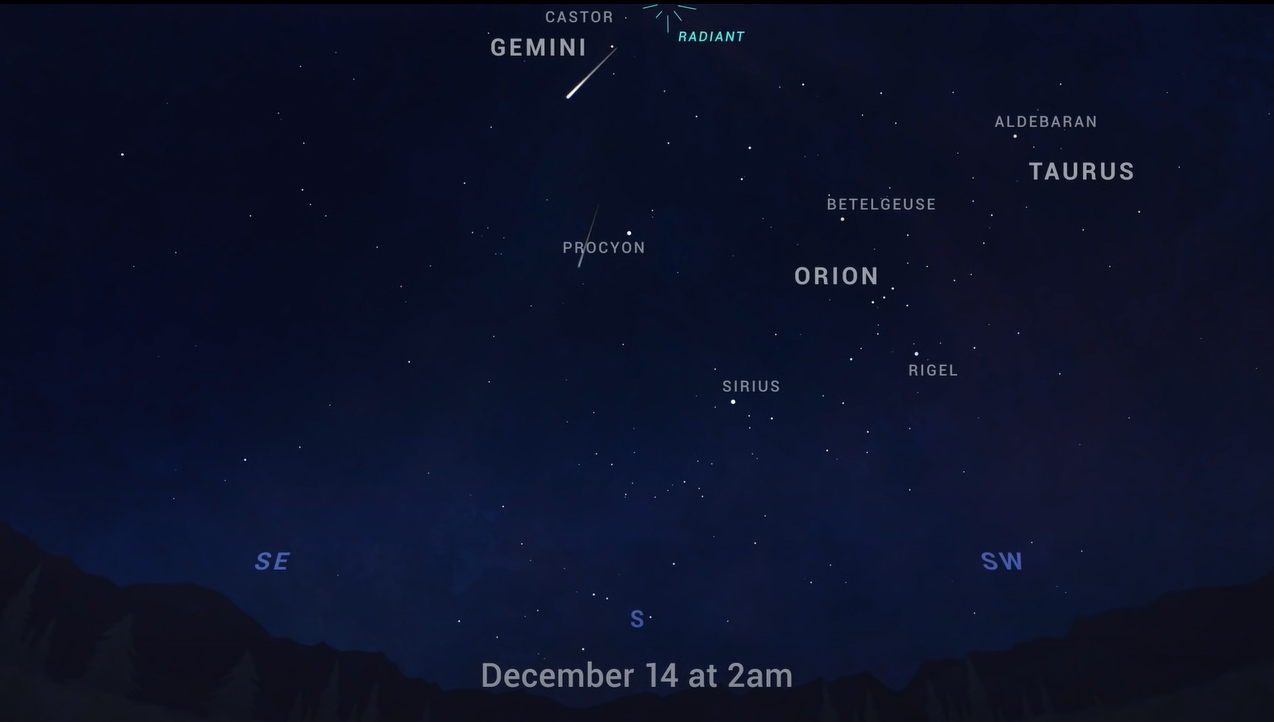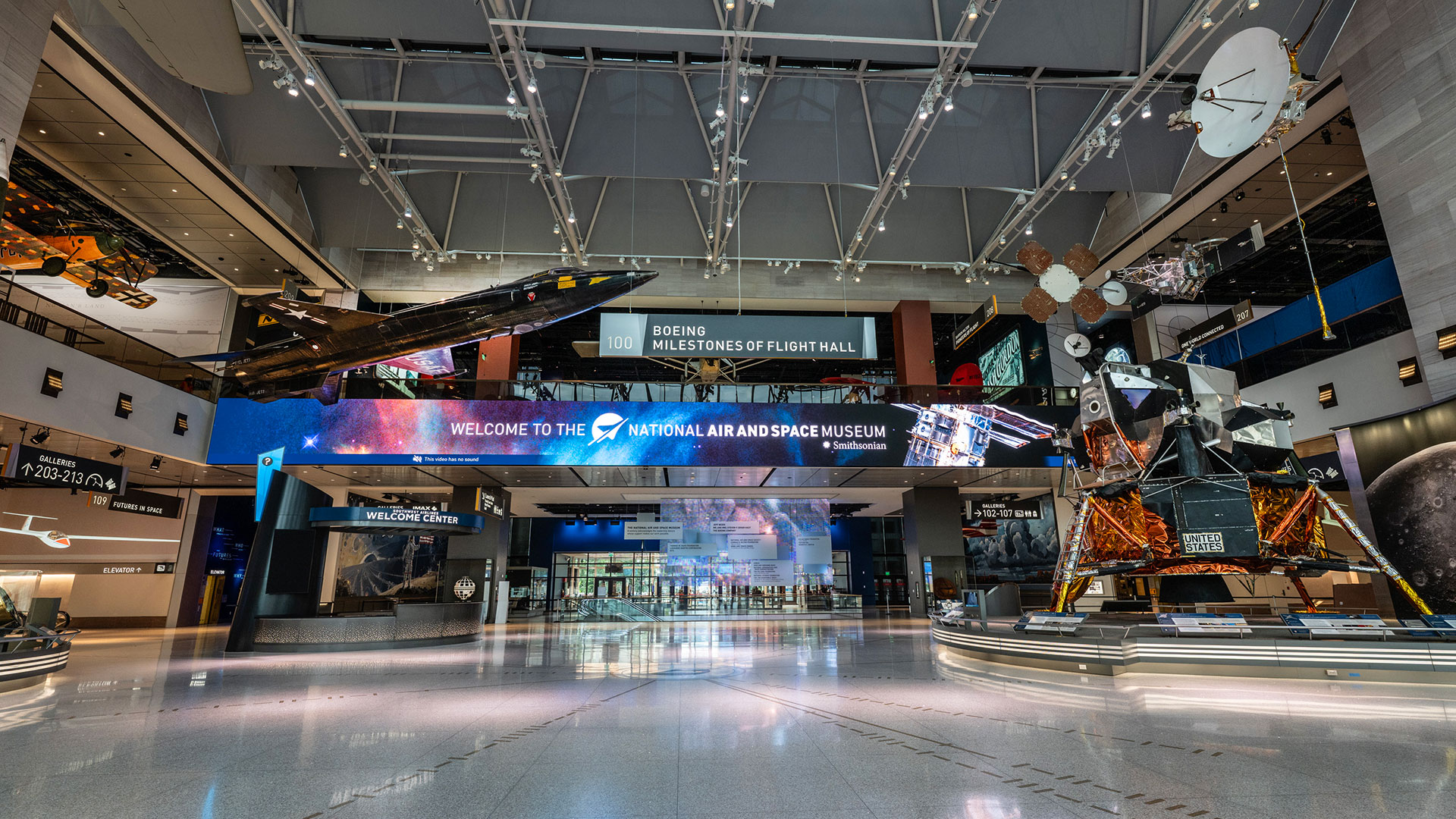The Geminid meteor shower of 2020 peaks tonight! Here's how to watch it live online
Don't miss the best meteor shower of 2020!
The Geminid meteor shower of 2020 will peak overnight tonight and you can watch it live online if bad weather spoils your view.
Billed as the best meteor display of the year, the Geminid meteor shower will be at its most active late tonight and early Monday (Dec. 13-14). The Geminids occur each year in December when the Earth passes through a dust trail from the asteroid 3200 Phaethon.
"Realistically, the predicated rate for observers in the Northern Hemisphere is closer to 60 meteors per hour," NASA officials wrote in an update. "This means you can expect to see an average of one Geminid per minute in dark skies at the shower peak."
Related: Geminid meteor shower 2020: When, where & how to see it
Gemini meteor shower webcasts

If you snap a photo of the Geminid meteor shower we want to know! You can send images, videos and your descriptions to: spacephotos@space.com.
You have several webcast options to watch the Geminid meteor shower online, but you'll be able to watch most of them here on Space.com.
At 5:30 p.m. EST (2230 GMT), the Slooh online observatory will kick off a webcast hosted by Slooh astronomers Paul Cox and Bob Berman, with special guest Dr. Mike Shaw. You can watch it here on Space.com, courtesy of Slooh.com, as well as on the Slooh website and YouTube page.
Slooh uses remotely operated telescopes in some of the most amazing dark-sky sites to offer users live views of the night sky. Subscribers can also remotely operate the telescopes.
Related: How to see the best meteor showers of 2020
Breaking space news, the latest updates on rocket launches, skywatching events and more!
If you're looking for something a little earlier, the Virtual Telescope Project by astrophysicist Gianluca Masi in Ceccano, Italy will offer another webcast at 5 p.m. EST (2200 GMT). You can follow that webcast on Space.com here, as well as directly from the Virtual Telescope Project's website here and its YouTube page here.
The YouTube site CosmoSapiens, which often streams live views of night sky events, will host its own webcast at 4 p.m. EST (2100 GMT).
NASA's Monday night Geminids
If you can't tune in to a Geminids meteor shower webcast on Sunday, don't fret.
NASA's Marshall Space Flight Center in Huntsville, Alabama will host a live webcast on Monday night (Dec. 14) on its Facebook page here. The NASA meteor webcast begins at 9 p.m. EST (0200 Dec. 15) and runs through 5 a.m. EST (1000 GMT).
The NASA webcast was originally scheduled for Sunday night, but rain and clouds prompted a delay.
"We likely won't see quite as many meteors as we would at peak, but if the skies stay clear it should still be a great night for meteor-spotting," NASA officials wrote in an update.
Of course, if your weather is clear, you can always try and observe Geminid meteors with your own eyes. They will appear to radiate from a point in the sky near the constellation Gemini, hence their name.
In the Northern Hemisphere, the best time to look for Geminids will be at about 2 a.m. Monday local time at your location, though they should start to be visible between 7:30 p.m. and 8 p.m. local time, according to NASA's update.
In the Southern Hemisphere, the Geminids begin a bit later, between midnight and dawn on Monday morning, NASA officials said.
"Geminid watchers who observe from midnight to 4 a.m. should catch the most meteors," NASA wrote in its update.
Tips to see the Geminid meteor shower
If you are hunting for Geminid meteors overnight, remember these tips.
First, get away from city lights. Streetlights and other light pollution can greatly diminish the number of meteors you can see.
Also be sure to let your eyes adjust to the dark for at least 30 minutes to make the most of your observing session.
If you're observing in the Northern Hemisphere where the weather is cooler, you may want to dress warmly and be ready with a blanket and lawn chair as you search for meteors.
Finally, don't just stare at the Gemini constellation. You might just miss some dazzling meteors.
"Meteors can generally be seen all over the sky. Avoid watching the radiant because meteors close to it have very short trails and are easily missed," NASA wrote. "When you see a meteor, try to trace it backwards. If you end up in the constellation Gemini, there’s a good chance you’ve seen a Geminid."
Editor's note: If you happen to observe the Geminid meteor shower of 2020 and would like to share the experience with Space.com for a story or slideshow, send images and comments in to spacephotos@space.com.
Email Tariq Malik at tmalik@space.com or follow him @tariqjmalik. Follow us @Spacedotcom, Facebook and Instagram.
Join our Space Forums to keep talking space on the latest missions, night sky and more! And if you have a news tip, correction or comment, let us know at: community@space.com.

Tariq is the award-winning Editor-in-Chief of Space.com and joined the team in 2001. He covers human spaceflight, as well as skywatching and entertainment. He became Space.com's Editor-in-Chief in 2019. Before joining Space.com, Tariq was a staff reporter for The Los Angeles Times covering education and city beats in La Habra, Fullerton and Huntington Beach. He's a recipient of the 2022 Harry Kolcum Award for excellence in space reporting and the 2025 Space Pioneer Award from the National Space Society. He is an Eagle Scout and Space Camp alum with journalism degrees from the USC and NYU. You can find Tariq at Space.com and as the co-host to the This Week In Space podcast on the TWiT network. To see his latest project, you can follow Tariq on Twitter @tariqjmalik.
